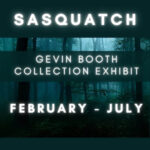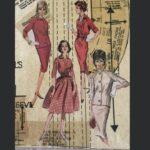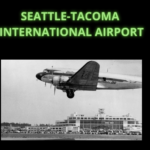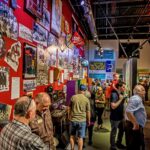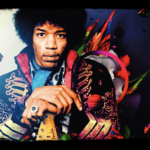We are pleased to share with you portions of this oral history conducted in 1996 by Gene Pugh with Loyal and Grace Reynolds. Loyal has passed away and Grace lives in Des Moines. – Ed
Loyal: I moved here when I was in the second grade. And I went all the way through Highline High School. When I came here Burien was not what it now is. There was a blacksmith shop, a sawmill, a lumber mill. At that time we lived in a house at First Avenue South and about 163rd . It was just a trail down to Five Corners. The road just came down to 152nd Street. The only road to Five Corners would be to go through Des Moines and out around Three Tree Point to 160th.
We used to play in the woods. We discovered that there was a STILL in there and we were paid five cents a week for NOT squealing on them. Once my mother found out that we were taking that kind of money, she made us give it all back. We could learn to keep still about anything that was not our business but we cound’t take money for it.
There were fourteen of us in our family: six boys and six girls and mom and dad.
Burien School was just one building, and after awhile they built the second building. There was a skating area. We used to skate around a post. Once I was skating around the post and I knocked two teeth out. I’ll never forget that.
In them days kids used to play marbles and things. These days kids don’t do that.
I was going to have a couple of brothers come here, but they had some other things to do.
We used to have Fourth of July celebrations here in Burien. A sign was strung up acrosss the street. My mother was the head of that because she loved to do that kind of thing. And then we had a program on the Fourth, just about like what we are doing here today, but it was much smaller because there was only about a third of the people out here then. We had little stands and what not. We had a running race between Burien and White Center. $15 was the first place, and $7 for second and $5 for the next one. Well my brothers and I and George Heckman from up on the hill decided to get in he race so we went down to watch the fellows that were practicing. They had uniforms and tennis shoes and all that. We thought, “We can’t do that, we don’t have all the equipment.” But anyway, we decided to get into it at the last minute. We had been riding bicycles and climbing hills for a long time so we had strong legs. When we started to White Center we got going pretty good. These other fellows stopped up the road about two miles, but we kept going. So I got into White Center first, George got ssecond and my brother Jim got third. That was quite a lot of money then. Se we went back to the drugstore where the soda fountain was, and we spent the $15 on sodas and what-not there.
THEY HAD A GREASED PIG CONTEST, TOO. You don’t see much of that anymore. They greased the pig and the guys would all stand in a circle. The one that caught the pig would get $10 or they could have the pig.
They also had the greased pole. There was a prize at the top of the pole. Anybody could climb that any time, and if they got to the top of the pole they could have the prize. Nobody ever got that thing.
Tenth Avenue used to be called Scheoning’s Hill. Mr. Schoening would tell us we could pick up the apples left under the treee (when I was about eight) Mr. Schoening told us that the bears would come out there and get most of the good apples. but we took all the windfall apples, worms and all and made cider. Mr. Schoening was quite a man.
Lake Burien was wooded all the way around and there was only one place we could go in to swim. We used to swim around the lake, and we had three places we stopped. We used to swim from one point to the next point, and go all the way around the lake, swimming.
As far as freezing was concerned, we had one year that the lake froze over and I decided I wanted a pair of ice skates. But being a big family like we were, we didn’t have them sitting around. So I finally got enough money together to get ice skates up at the pawn shop in Seattle. I took the street car back out, and got off between Burien and Seahurst. I put my skates on, went a few yards and got on the ice, skated across. When I got over there Bill Titus had drowned in the lake. The ice was too thin, So I made one skate across Lake Burien and then I had to take my skates off. They condemned it from then on. That’s the last time I saw that lake frozen over; it hasn’t been frozen for a long long time. Things have changed.
THE STREETCAR used to come out from Riverside through White Center, up to Burien, behind the drug store and in front of Ivan Phillips’ garage, and then on to Seahurst. When we wanted to ride it, of course we couldn’t afford to pay, so we’d jump on the cow-catcher, think we were being smart. But they’d kick us off then. We used to ride the streetcar that way.
Grace: My family lived in White Center, so our Sunday outing was to ride the streetcar out to Seahurst and back. At that time on the south side of Lake Burien there was a resort. I remember seeing the diving tower and all that, but I don’t remember ever going there.
When we got to Seahurst the streetcar man would take the trolly off at the back end and put it up at the other end. And he would take the control handles off and put them at the other end of the car to go the other direction. They used to bring box-car loads of lumber and stuff out to Bunge Lumber on those same tracks out to Burien. I never did know how they got on at the other end; it was at Riverside, I guess. Riverside was at Spokane Street.
I didn’t get involved in Burien with Loyal until the ‘30’s. In about 1936 or 1937 they had a Miss Burien contest. In those days they used to sell tickets to the dance for Saturday night on the Fourth of July. The girl who sold the most tickets was crowned the queen. So I got to be one of the princesses because I didn’t sell enough tickets. They gave us all a dress. The ladies made dresses for us. That was a big deal because things were hard to buy in those days.
FOR THE FOURTH OF JULY they would close off 152nd Street down to Tenth Avenue and they had races and things. We got in a foot race, the girls. We had booths; people in the community could set up a booth. Loyal and I ran one that was a Mouse Race. We had little traps and we had our own little mice in back of a barricade. Everybody would bet their nickel on a mouse, which one would win. And then we’d raise the traps and the mice would run down. But we weren’t very good people. When we’d get some money ahead we’d go over to the drugstore and get some strawberry sodas, made with strawberry ice cream. There wasn’t too much left in the kitty.
Loyal: I got to thinking about the lumberyard there. I wanted to buy the lumberyard from the real estate man here. I can’t think of his name right now but he had his office two blocks up the street here. He said I could buy that place (where the theater sat, the Den Burien Theater), and tear down the coal barn for $1200. At the time I was delivering the Seattle Star, the White Center News and the Post Intelligencer and the Seattle Shopping News. I was making pretty good money, you might say. I worked hard. But my mother said, “No, your can’t buy it. You’re not old enough to buy something like that, and besides the family needed the money. “But for $1200 we could have had a half a plot.
JUST BEHIND THE DRUGSTORE THERE WAS A MILL THAT GROUND FLOUR. There was flour everywhere. There was a woman who had a bakery in a big tall building; it’s a tavern now. She made pies and cakes and stuff. She was a real good cook. I delivered the papers to her. And I delivered to her on time because she’d be there to give me a piece of pie. So she got her paper on time just about every time.
Burien started to grow. Just behind Bunge Lumber (Note: this is the present site of Wells Fargo Bank on 152nd in Burien. – Ed) there was a family, the Bogardus family, and they started a gas station.
Johnny Summers started his first store in Burien here with mostly vegetables and just a few groceries. Grace was his first clerk. We had just gotten married. Johnny hired her. Later on he and his wife separated and his wife took over the store. People used to charge groceries then. Johnny didn’t tell me about getting a divorce. But finally he came down to me and said, “We’re closing the store, so if you want anything you can have it at my price. so you come down and pick it out because the store is going to close.” So we got $85 worth of groceries, which was a LOT of groceries in those days. So Johnny started out his store in Burien first, and he turned out to be a very wealthy man in grocery stores. I worked for them for awhile, but later I started an electrical shop in Burien.
Conlon’s was where the family bought their groceries. My dad worked at the Northern Pacific roundhouse; he was a boiler-maker and we had the big family. He’d come home with a paycheck every two weeks and Mother and Dad would talk it over. So he would give me the check and I would go down and say, “Mr. Conlon, my folks need to buy a couple of pairs of shoes,” but that’s all we wanted out of the check and the rest would pay on our grocery bill. “And we want to negotiate with you.” So he would say “Yes,” or “No.” We always owed him money because it was a constant bill we had charged.
Conlon used to come to the corner where we lived at 162nd and Tenth (Tenth used to be called Schoening Ave.) and give out food to those who really needed it. But they wouldn’t give us a carrot out of that truck, because my dad worked. We had to strictly buy it at the grocery store.
Grace and I wanted to get married but it didn’t work because my folks said, “We need your money.” So I said, “I’ll give you a year and then we’ll get married.” I’m telling you this to show just how close money was in the family. Anyway, the next year we got married and took the bill and put it in our name. From then on they worked strictly on cash and that worked out fine. We’ve been married now for 56 years. (Note: Now, the Reynolds have been married for 72 years. – Ed.)
Grace: Loyal used to raise rabbits. He had them in separate hutches, and had them all labeled and dated as to which ones wee going to produce and so forth. But his brothers and sisters kept switching them together so he didn’t know how many rabbits he was getting. His dad was very insistent that they had to be fed. They had to go out and pull clover to feed them, they didn’t just go buy rabbit feed, you know. Finally is dad got so angry because they didn’t have enough water. So he turned them all loose. It was woods up there on Tenth and SW 162nd. We saw rabbits running around in the woods for years afterwards. They didn’t last long. The neighbors would catch them. We used to have to kill and eat rabbit maybe three times a week. We don’t have rabbit at our house any more. It’s quite hard for me to kill a rabbit anymore, and I killed a lot of them.
Loyal: When I was delivering papers there was the Copeland family who lived where the Taco time is now located. They had quite a house there. The Copeland boy and I delivered the papers. We had an old Durant car we picked up. I’d drive down so far and leave the car, then I’d deliver the papers ahead of me. So he’s pick up the car and drive ahead and park it, and I’d pick it up when I got down there. So we’d deliver the papers. The morning paper was the hardest. When we delivered papers out here the houses were not close together, there was a family here and a family there. It seemed like for 50 papers it would take us fifty miles.
Burien kind of grew up with us. When we went to school we walked. When we went to Lake Burien School we walked. Then when we left Lake Burien they put on a bus. Now the kids get picked up by a bus. We used to walk a trail down 152nd to Highline High School. There used to be kids riding horses and we’d have to move off the trail when they came along. These are just things that happened that don’t happen now. That was really old Burien.
We used to slide down the hill on 160th from about 9th Avenue to the bottom of the hill (by Sylvester now). It was just a trail for years. Mom used to pick blackberries. That’s how she made extra money. They used to b right outside our door. I’m talking about the little ones, real good ones. Mom had a ten-gallon can and kids had two-gallon cans. We’d go down that hill and it was real hot weather. She’d have us picking berries until all those cans were full. That was not the only thing about them, the hardest thing was packing them back up that hill again, to where we lived. There was a big water tank up there, and we’d keep climbing up toward it. We’d say, ”We’re almost there, so we can go swimming now in Lake Burien.” We swam there nearly every day in the summer.
IN THE WINTER WHEN WE HAD SNOW we used to slide down Schoening’s hill. Kids would stand at all the cross roads in case a car came, but there were very few. So we had a great time. It would last a couple of weeks. This was about 1930 to 1934.
Grace: Loyal had a Model T that he drove when I lived up in white Center. It was in the Snow. He would jam on the brakes and we’d skid round and round. We wouldn’t do that nowadays.
I lived in white Center, so he used to get on his bike and bicycle into White Center along Ambaum. He’d get my sister and me and pedal all the way back to Burien, three on a bike, to the dance at Burien Log Hall. Afterward he’s take us back on the bike and then have to pedal back home to Burien. So he did a lot of cycling.
Loyal was a teenager when they built the Log Hall. It was during the Depression. They had the WPA and Unemployed Citizens League. Loyal had to haul rocks for the fireplace, which is still standing. They must have used good cement. The men who built it were masons, not bricklayers. So they knew how to lay rock and Cement. Mr. Carter was on of the men, and Mr. Sheridan.
Loyal: Mr. Sheridan was a plumber, a phenomenal plumber too a good one. He worked by himself. He chewed on cigars, he never lit ‘em, just chewed them up. I’d help him on week-ends or at night. He’d crawl underneath the house and then he’d say, “Hand me a wrench.” He’d go under there early in the morning and he wouldn’t come out maybe til lunchtime. Then he’d crawl back in there and you could hear him using them good words while he was chewing on his cigars. Everybody used him. There wasn’t that many jobs around, but that was about the time when everybody was starting to put in inside toilets. He finally quit when he got too old. And he gave me a 1923 Model T Ford, which I took home and talked my mother into letting me have it. I made a “bug” out of it and printed its name on the side: DAMNEDIFI KNOW. So when the kids saw it and asked what it was called, I’d answer, “Damned if I know.”
Copeland joined the army and he stayed in, turned out to be a brigadier general or something. George Hecker was going to join the navy and I was too. But I had a tooth knocked out when I was in grade school, so I had to get that fixed before I could get in. but George did and he was in the service twenty some years. He married a girl back in Virginia. I’ve tried to keep track of all my friends who lived here and moved away, but it’s been hard to do that.
The Pratt family lived on 150th. He came from Yakima, and my dad was from Sunnyside. They found out later that they had known each other when they were kids back there.
WORLD WAR II AND THE VIETNAM WAR. All six brothers went into the service and all six came back. Mom had the stars in the window. I remember my dad taking me down to the depot. We were married at the time. The draft came up and they published the names in the paper. My name came up right away, IN NEON. My God, it came up already. So I went down and joined the Seabees, I didn’t want to b in the army. One of my brothers was in the army, and two others were in the navy.
Burien Fire Department had an old truck, a red one. I was in the volunteer fire department. When the whistle would blow we’d all run over to get on the truck. Well, one time the truck seemed to be late. The fire was just down the street, on 152nd where the King Wha Restaurant is now. It was a little house burning. When we got there, there was all these firemen standing there but the fire truck wasn’t there. There was two barrels of diesel oil out in back of the building, so we got that out of the way. But the truck still wasn’t there and we needed it to finish up. So when I went back to the station the truck wasn’t there. I found it down the hill, some three blocks down Schoening Ave. Some kids had tried to start it, but couldn’t get it going. When we finally got it to the fire the house had burned down just to the ashes. Garden hoses and buckets had saved the houses around it. That’s what they used to fight fires in those days.
The place where the Key Bank is now (used to be the Seattle Trust and Savings Bank) had a blacksmith shop. The Connor family ran it. It was just like the ones you see in the cowboy shows. I can remember seeing him in his big leather apron beating on the metal when he was making stuff. They had twins, Paul and David Conner. I went to high school with them and they now live in West Seattle. Fitchett’s service station was there where the Key Bank parking lot is located now.




